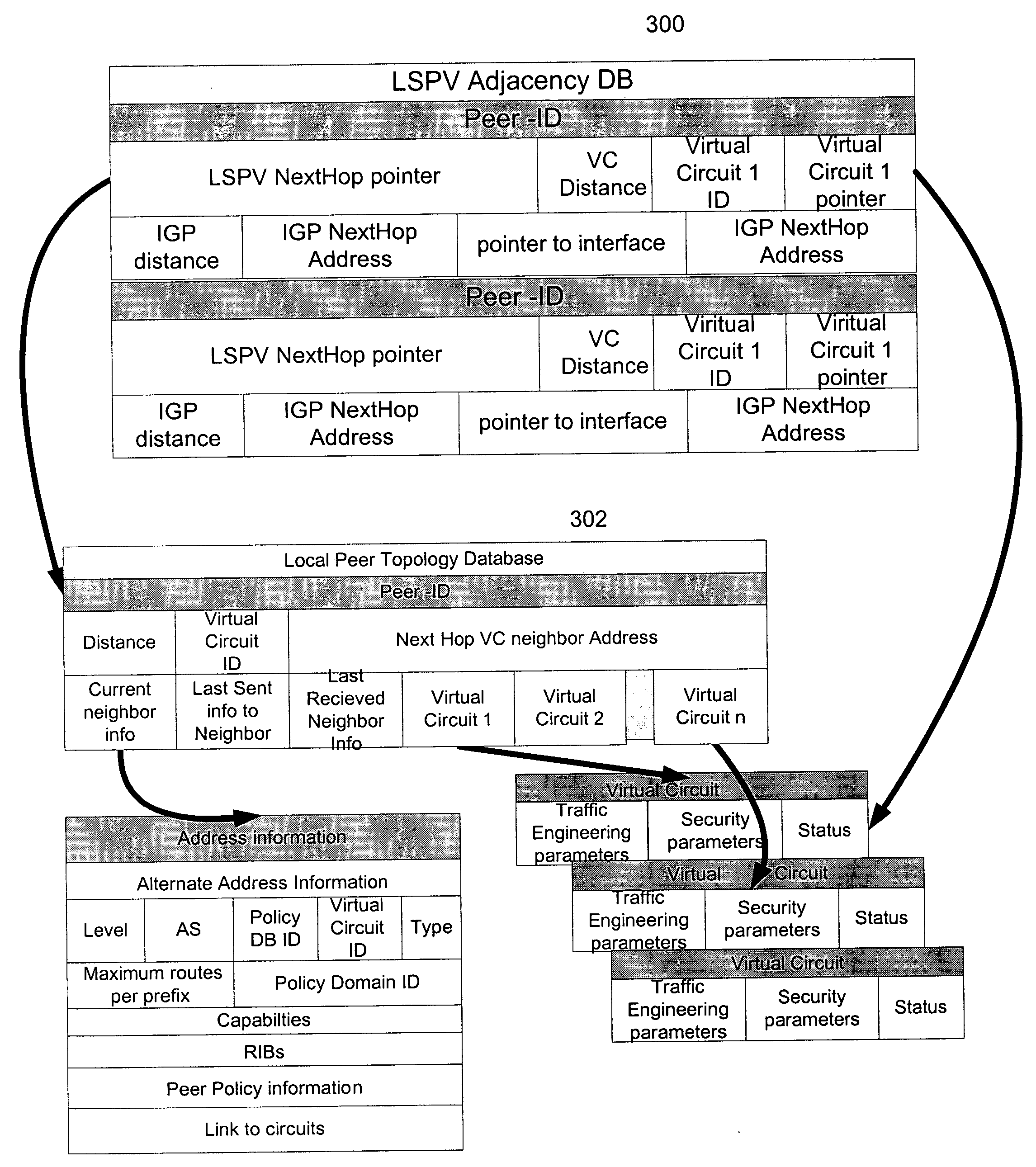Systems and methods for routing employing link state and path vector techniques
a link state and path vector technology, applied in the field of network protocols and algorithms, can solve the problems of increasing the likelihood of erroneous entries, manual configuration suffers from obvious scale and consistency problems, and considerable time and system resources
- Summary
- Abstract
- Description
- Claims
- Application Information
AI Technical Summary
Benefits of technology
Problems solved by technology
Method used
Image
Examples
Embodiment Construction
A. Introduction
The invention includes protocols and algorithms referred to collectively by the moniker “Link State Path Vector.” Embodiments of the invention include algorithms to achieve one or more of the following functions: Establish topologies, referred to herein as Virtual Peer Topologies, which are based on virtual links and virtual adjacencies.
FIG. 1 illustrates a non-limiting example of a virtual peer topology 100. The virtual links vlink1-vlink10 and adjacencies are logical constructs denoting communication capabilities between nodes of a network. The virtual links and adjacencies may be instantiated by or more physical communication connections or channels, operating over any type of communication protocol. In embodiments of the invention, the virtual links can support point-to-point links or virtual multicast LANs with designated routers. The LSPV algorithms allow multiple level Hellos, 3-way / 4-way negotiations sequences with quick drops, and heart beat hellos that ma...
PUM
 Login to View More
Login to View More Abstract
Description
Claims
Application Information
 Login to View More
Login to View More - R&D
- Intellectual Property
- Life Sciences
- Materials
- Tech Scout
- Unparalleled Data Quality
- Higher Quality Content
- 60% Fewer Hallucinations
Browse by: Latest US Patents, China's latest patents, Technical Efficacy Thesaurus, Application Domain, Technology Topic, Popular Technical Reports.
© 2025 PatSnap. All rights reserved.Legal|Privacy policy|Modern Slavery Act Transparency Statement|Sitemap|About US| Contact US: help@patsnap.com



